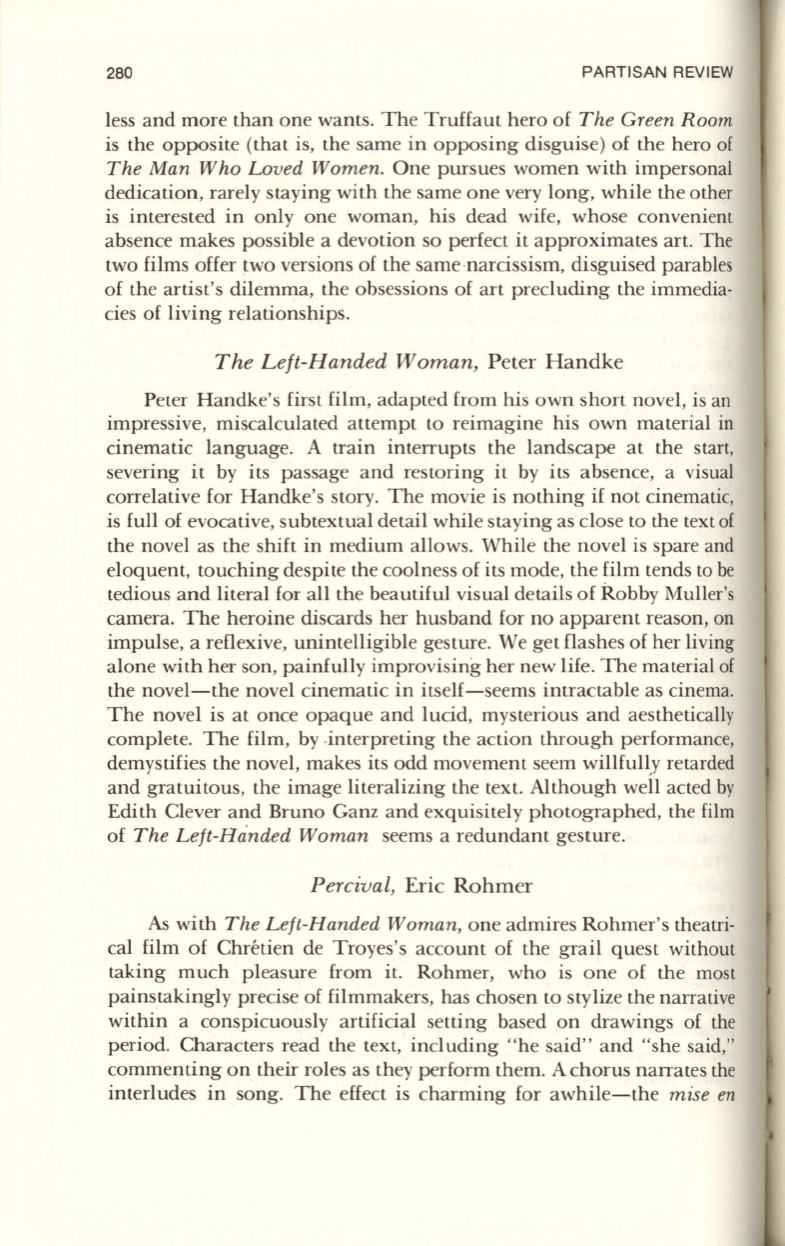
280
PARTISAN REVIEW
less and more than one wants. The Truffaut hero of
The Green Room
is the opposite (that is, the same in opposing disguise) of the hero of
The Man Who Loved Women.
One pursues women with impersonal
dedication, rarely staying with the same one very long, while the other
is interested in only one woman, his dead wife, whose convenient
absence makes possible a devotion so perfect it approximates art. The
two films offer two versions of the same ·narcissism, disguised parables
of the artist's dilemma, the obsessions of art precluding the immedia–
cies of living relationships.
The Left-Handed Woman,
Peter Handke
Peter Handke's first film, adapted from his own short novel, is an
impressive, miscalculated attempt to reimagine his own material in
cinematic language. A train interrupts the landscape at the start,
severing it by its passage and restoring it by its absence, a visual
correlative for Handke's story. The movie is nothing if not cinematic,
is full of evocative, subtextual detail while staying as close
to
the text of
the novel as the shift in medium allows. While the novel is spare and
eloquent, touching despite the coolness of its mode, the film tends to be
tedious and literal for all the beautiful visual details of Robby Muller's
camera. The heroine discards her husband for no apparent reason, on
impulse, a reflexive, unintelligible gesture. We get flashes of her living
alone with her son, painfully improvising her new life. The material of
the novel-the novel cinematic in itself-seems intractable as cinema.
The novel is at once opaque and lucid, mysterious and aesthetically
complete. The film, by .interpreting the action through performance,
demystifies the novel, makes its odd movement seem willfully retarded
and gratuitous, the image literalizing the text. Although well acted by
Edith Clever and Bruno Ganz and exquisitely photographed, the film
of
The Left-Ha·nded Woman
seems a redundant gesture.
Percival,
Eric Rohmer
As
with
The Left-Handed Woman,
one admires Rohmer's theatri–
cal film of Chretien de Troyes's account of the grail quest without
taking much pleasure from it. Rohmer, who is one of the most
painstakingly precise of filmmakers, has chosen to stylize the narrative
within a conspicuously artificial setting based on drawings of the
period. Characters read the text, including "he said" and "she said,"
commenting on their roles as they perform them. A chorus narrates the
interludes in song. The effect is charming for awhile-the
mise en


